You are here
New Releases
Health Response to Gender-Based Violence: Facilitators' Guide
This health response to gender-based violence training package is designed to improve the capacity of health workers of Nepal for improving the quality of services provided to GBV survivors at all levels of health facilities—health posts, primary health centers, district hospitals, and referral hospitals. As GBV is a very sensitive issue and learners will have limited hands-on practice with clients to build competency, this training uses the low-dose, high-frequency learning approach with a variety of teaching and learning methods such as case studies, role-plays, animation with exercises, and use of anatomic models.
This Competency-Based Training Package for Blended Learning and On-the-Job Training is developed by Nepal's Ministry of Health and Population with technical and financial assistance from UNFPA, the United Nations Population Fund, and also with Jhpiego's technical support.
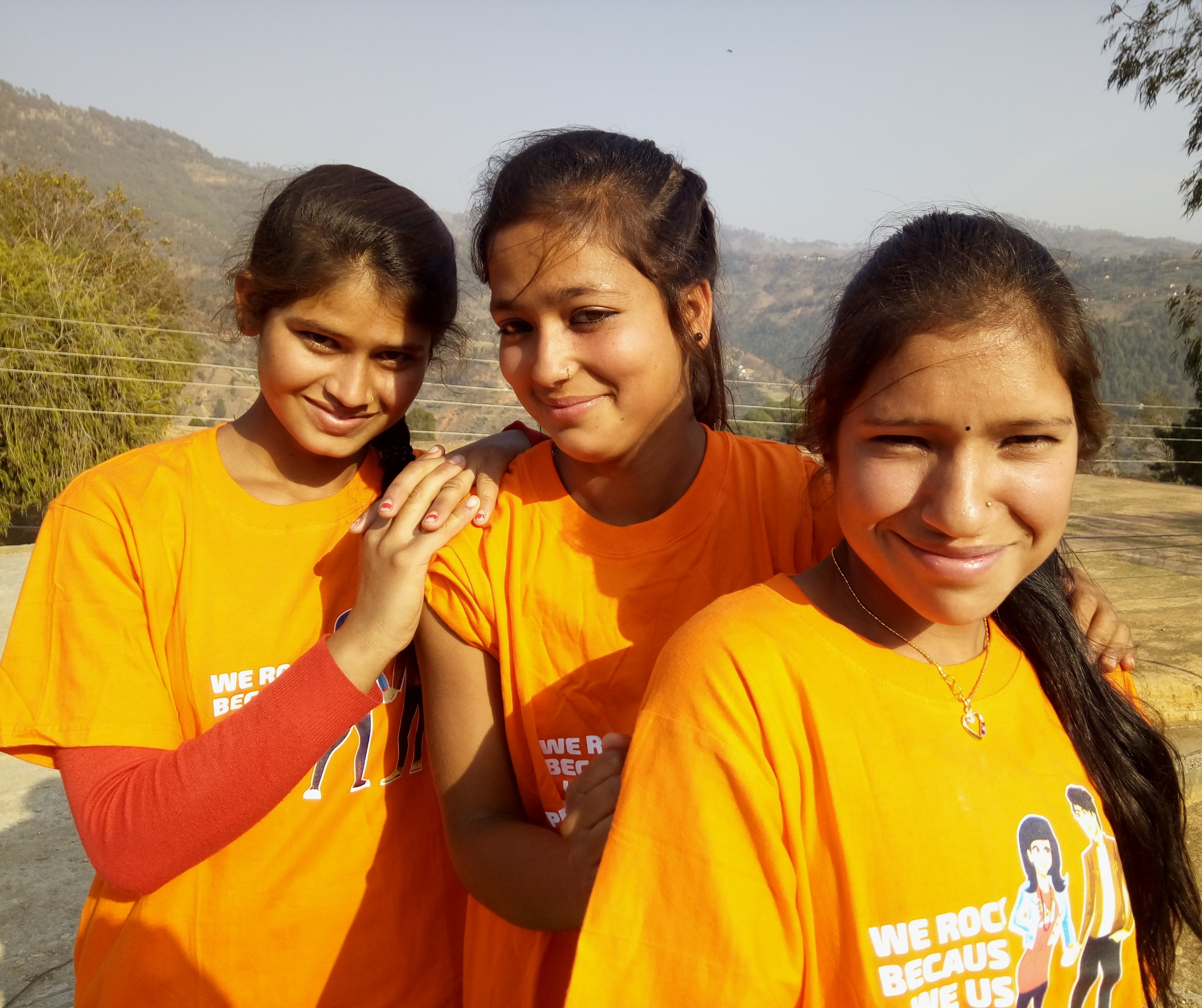
A Summary of the Study on Barriers and Constraints Affecting the Quality and Utilization of Adolescent Friendly Services in Nepal
This is a summary of the study on “Assessing Supply Side Constraints Affecting the Quality of Adolescent Friendly Services and the Barriers for Service Utilization”. The study explores the supply and demand side barriers impacting on access to and utilization of adolescent-friendly health services (AFHS) by adolescent boys and girls aged 10-19 years across diverse socio-cultural and geographical settings in Nepal. This is a qualitative study conducted in 12 districts of the country carried out under the leadership of the Family Health Division with technical and financial support of UNFPA, the United Nations Population Fund. An international consultant supported by UNICEF provided technical inputs while producing this report.
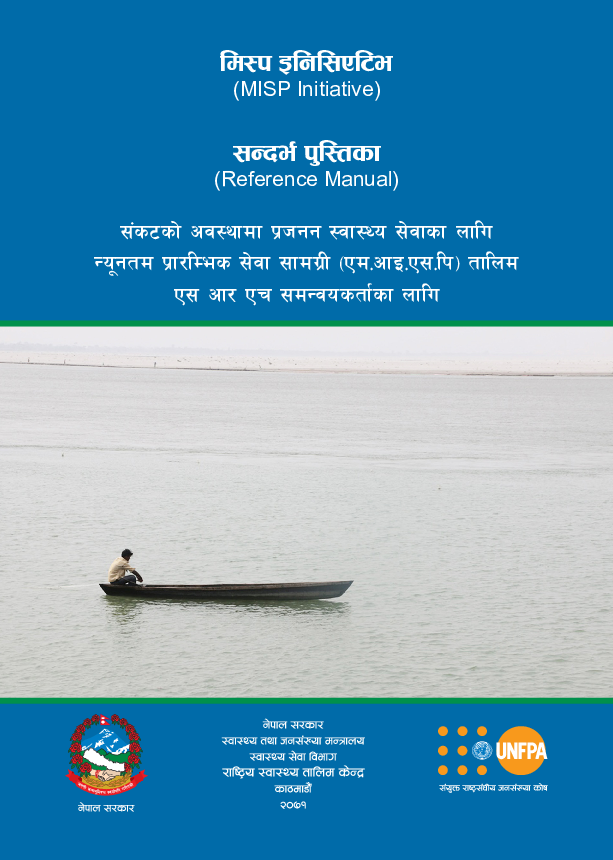
संकटको अवस्थामा प्रजनन स्वास्थ्य सेवाका लागि न्यूनतम प्रारम्भिक सेवा सामाग्री तालिम सहभागि पुस्तिका
This Minimum Initial Service Package (MISP) for Sexual and Reproductive Health (SRH) Reference Manual (in Nepali language) is developed to help humanitarian workers, and other stakeholders in Nepal to fulfill the SRH needs of the affected populations during emergency setting.
संकटको अवस्थामा प्रजनन स्वास्थ्य सेवाका लागि न्यूनतम प्रारम्भिक सेवा सामाग्री सहजकर्ता निर्देशिका
This Minimum Initial Service Package (MISP) for Sexual and Reproductive Health (SRH) Facilitators' Manual is developed to help humanitarian workers, health workers, SRH coordinators and other stakeholders in Nepal to fulfill the SRH needs of the affected populations during emergency setting.
The MISP for Reproductive Health is a coordinated set of priority activities designed to: prevent and manage the consequences of sexual violence; reduce HIV transmission; prevent excess maternal and neonatal mortality and morbidity; and plan for comprehensive RH services in the early days and weeks of an emergency.
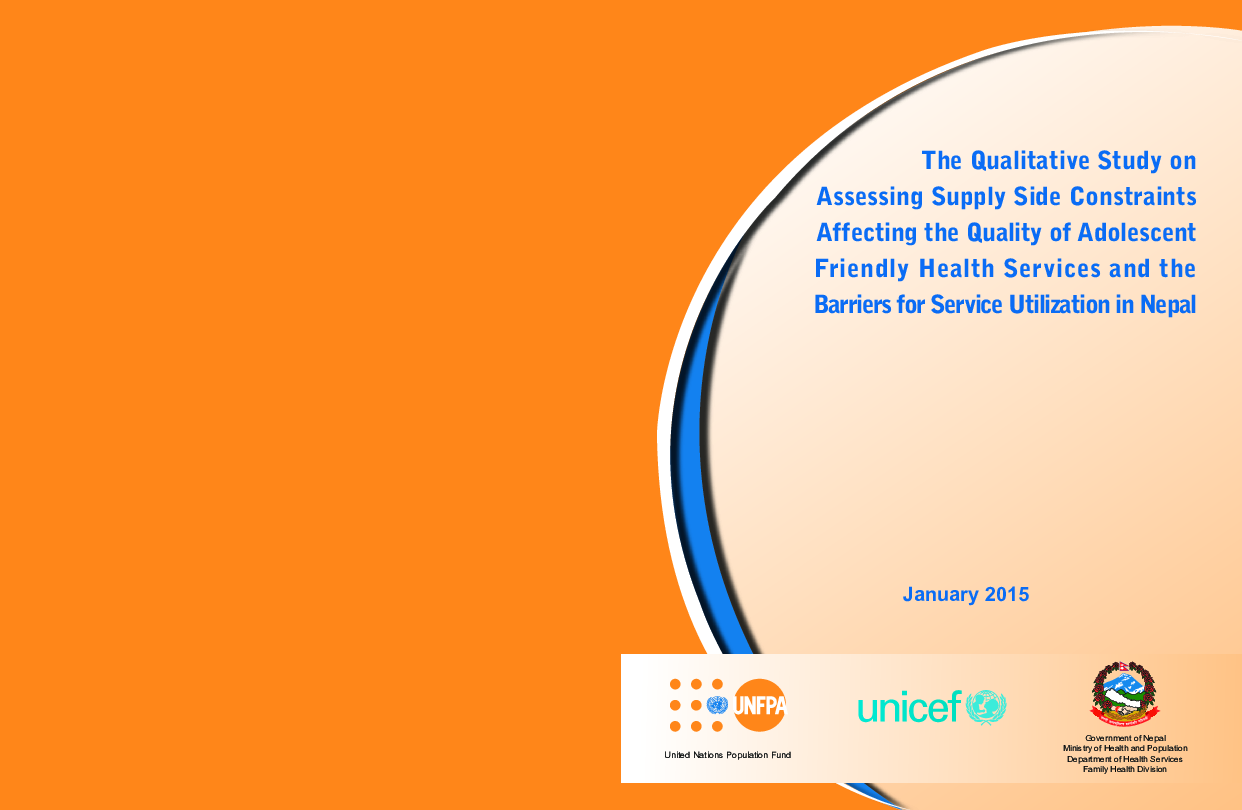
The Qualitative Study on Assessing Supply Side Constraints Affecting the Quality of Adolescent Friendly Health Services and the Barriers for Service Utilization in Nepal
This study explores the supply and demand side barriers impacting on access to and utilization of adolescent-friendly health services (AFHS) by adolescent boys and girls aged 10-19 years across diverse socio-cultural and geographical settings in Nepal. This is a qualitative study conducted in 12 districts of the country. It was carried out under the leadership of the Family Health Division with technical and financial support of UNFPA, the United Nations Population Fund. An international consultant supported by UNICEF provided technical inputs while producing this report.
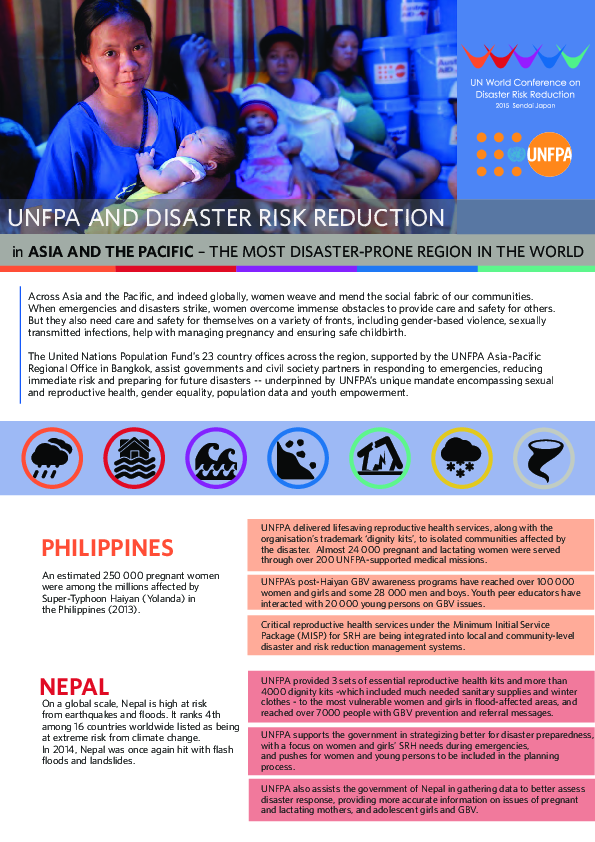
Fact sheet on disaster risk reduction
On a global scale, Nepal is high at risk from earthquakes and floods. It ranks 4th among 16 countries worldwide listed as being at extreme risk from climate change.
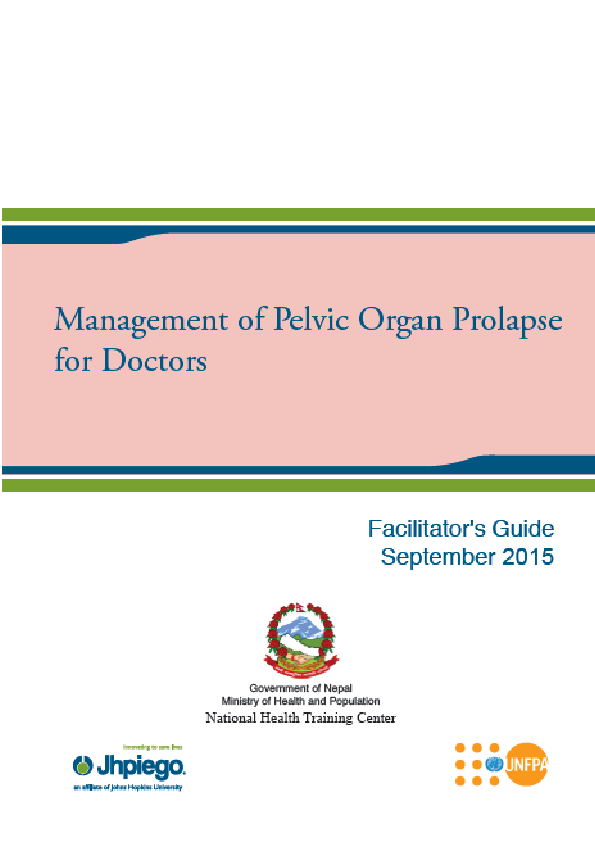
Management of Pelvic Organ Prolapse for Doctors: Facilitators' Guide
Pelvic organ prolapse (POP) is a significant reproductive morbidity among postmenopausal and women of reproductive age in Nepal. An estimated 600,000 women are suffering from varying degrees of POP (also called uterine prolapse or fallen womb). In the absence of a competency-based training package on POP, health service providers previously did not have standards for performing surgeries and were relying on anecdotal reports, compromising on the quality of care. With the training package, service providers are now expected to have comprehensive knowledge about this condition that affects many adult women today on how to provide quality care.
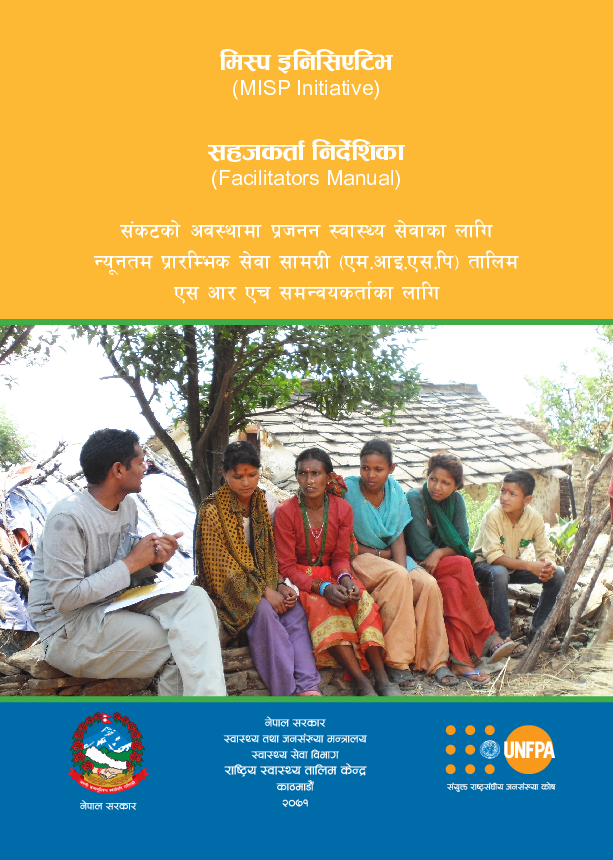
संकटको अवस्थामा प्रजनन स्वास्थ्य सेवाका लागि न्यूनतम प्रारम्भिक सेवा सामाग्री तालिम निर्देशिका
This Facilitators' Manual is an adapted version that highlights various steps needed to facilitate the Training on the Minimum Initial Service Package (MISP) for Sexual and Reproductive Health (SRH) in crisis situations.
Nepali Youth in Figures
This publication highlights data specific to youth in Nepal, which is based on the Population and Housing Census 2011. The Population and Housing Census made public the collective data related to different diverse features of Nepal's population. However, it had no separate data set related to youth. Realising this, the Ministry of Youth and Sports together with the CBS, UNFPA and RD initiated this dataset that focuses on facts and figures related to youth of Nepal.
The database presents the distribution of youth population by age 16-25 and 26-40 years and sex ratio. It analysed the data available in Population and Housing Census 2011. It was later disaggregated to represent region, zones, and ecological belts from 75 districts. This analytical dataset highlights 17 components: Total Population and households, Youth Population, Sex Ratio, Literacy Status, Educational Attainment, Schools/Colleges Attendance, Population Abroad, Disability Status, Marital Status, Singulate Mean Age at Marriage, Total Fertility Rate, Usual Activities, Economically Active Population, Occupation, Status of Employment, Economically Inactive Population, and Access to Information Technology.
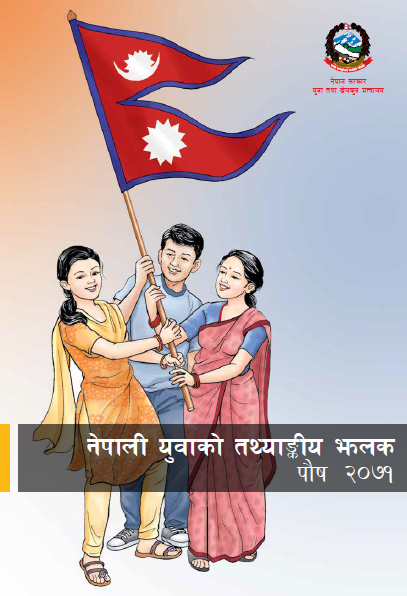
Nepali Youth in Figures
This publication in Nepali highlights data specific to youth in Nepal, which is based on the Population and Housing Census 2011. The Population and Housing Census made public the collective data related to different diverse features of Nepal's population. However, it had no separate data set related to youth. Realising this, the Ministry of Youth and Sports together with the CBS, UNFPA and RD initiated this dataset that focuses on facts and figures related to youth of Nepal.
The database presents the distribution of youth population by age 16-25 and 26-40 years and sex ratio. It analysed the data available in Population and Housing Census 2011. It was later disaggregated to represent region, zones, and ecological belts from 75 districts. This analytical dataset highlights 17 components: Total Population and households, Youth Population, Sex Ratio, Literacy Status, Educational Attainment, Schools/Colleges Attendance, Population Abroad, Disability Status, Marital Status, Singulate Mean Age at Marriage, Total Fertility Rate, Usual Activities, Economically Active Population, Occupation, Status of Employment, Economically Inactive Population, and Access to Information Technology.